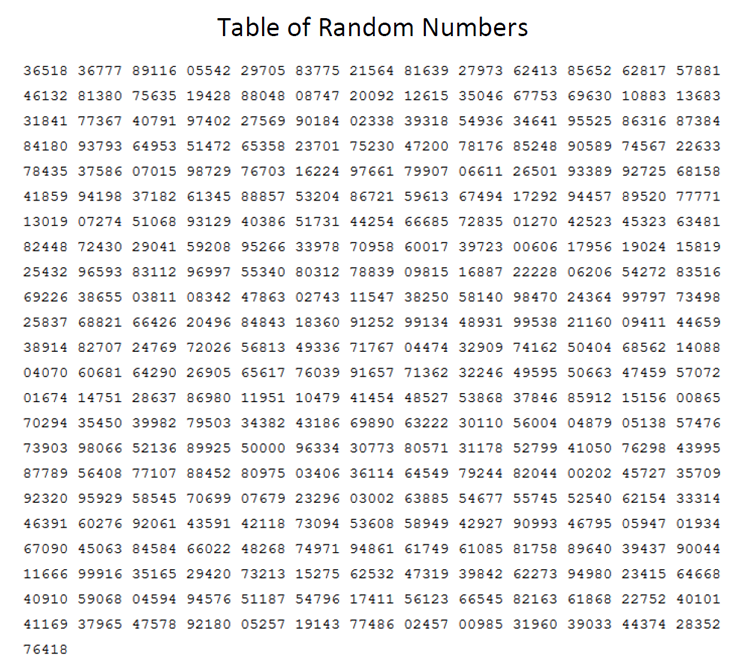The concept of "randomness" implies that every item being considered has an equal chance of being selected as part of the sample. |
A sample set is a small selection of subjects from a larger population. When doing statistical research, this sample set needs to resemble, as closely as possible, the larger group. The goal of using a randomly selected sample set is to eventually generalize the findings from the sample set back to the larger population. But how do researchers determine a sample set that will truly be representative of the larger population?
The answer to obtaining a representative sample can be the use of a table of random numbers to select each member of the sample set. By using a random number table, all members in the population will have an equal and independent chance of being selected for the sample group. (Independent selection means one individual does not have an effect on the selection of other individuals in the population.)
A random number table is a series of digits (0 to 9) arranged randomly in rows and columns, as demonstrated in the small sample shown below. The table usually contains 5-digit numbers, arranged in rows and columns, for ease of reading. Typically, a full table may extend over as many as four or more pages. You will find random number tables in most statistical textbooks. Random number tables have been in existence since 1927 and are generated by a variety of methods.

How to use a random number table: |
Note: This method is one from a variety of methods of reading numbers from random number tables.
1. Assume you have the test scores for a population of 200 students. Each student has been assigned a number from 1 to 200. We want to randomly sample only 5 of the students for this demo.
2. Since the population size is a three-digit number, we will use the first three digits of the numbers listed in the table.
3. Without looking, point to a starting spot in the table. Assume we land on 75636 (3rd column, 2nd entry).
4. This location gives the first three digits to be 756. This choice is too large (> 200), so we choose the next number in that column. Keep in mind that we are looking for numbers whose first three digits are from 001 to 200 (representing students).
5. The second choice gives the first three digits to be 407, also too large. Continue down the column until you find 5 of the numbers whose first three digits are less than or equal to 200.
6. From this table, we arrive at 070 (07015), 038 (03811), 045 (04594), 055 (05542), and 194 (19428).
7. RESULT: Students 38, 45, 55, 70, and 194 will be used for our random sample.
Our sample set of students has been randomly selected where each student had an equal chance of being selected and the selection of one student did not influence the selection of other students.

Note: In today's world, tables of random numbers have been nearly replaced by computational random number generators. Like the random number tables, these generators use several different methods for generating random data.
Most calculators cannot generate "truly" random numbers. They use a formula with a number seed to generate the numbers, which means that the list could potentially be repeated (making the list not truly random). Such pseudo-random number lists, however, will be sufficient for your investigations at the Algebra 2 level.